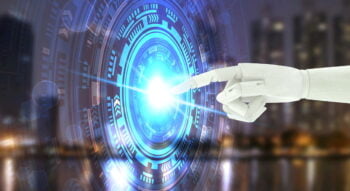A computer that stores and processes data in a single chip is able to tell apart different people’s handwriting.
Prof Shahar Kvatinsky, of the Technion, in Haifa, says combining its RAM and CPU allows it to function much more like a human brain, and opens up a whole new world of opportunities.
To demonstrate its capabilities, he and his team presented the chip with different examples of handwritten letters. The chip learned which one was which with each example, and achieved a 97 per cent accuracy in recognition.
“We like to describe a computer as a ‘brain’, but entirely separate hardware for storing information and for using it is not how an organic brain works,” said Prof Kvatinsky.
Chips that are capable of both storing information and processing it have many potential uses. For example, a chip could be incorporated into the camera sensor of a smartphone, and save energy whenever someone takes a picture.
Normally, the smartphone needs to convert the physical objects it sees into digital data every time it snaps a photo, which consumes energy. With this chip, the phone can process the raw image before it stores it in a compressed digital form.
The neurons in a human brain build stronger connections whenever a person learns, and much like this, the learning process strengthens the conductivity of the new artificial neural network.
Sign up for our free weekly newsletter
SubscribeTraditional computers have two parts to their hardware. The memory, RAM, or hard drive stores information, while the CPU or processor processes the information.
Conventional computers can only surpass human brains by relying on many processors and using a lot of energy. For example, the computer program that beat chess masters needed to use 1,500 processors and racked up a $3,000 electricity bill per game.
The human players’ energy consumption for the same game amounted to much less. And, meanwhile, they were also capable of doing several things at once.
“Commercial companies are in a constant race to improve their product,” said Prof Kvatinsky.
“They cannot afford to go back to the drawing board and reimagine the product from scratch. That’s an advantage the academia has – we can develop a new concept that we believe could be better and, release it when it can compete with what’s already on the market.”
His results were published in the academic journal Nature Electronics.
Related posts

Israeli AI Safety Tool Among TIME’S Best Inventions For 2024

TAU Team Discovers Mechanism To Eliminate Cancerous Tumors

Ashdod Port Investing In Startups As Part Of Innovation Strategy




Facebook comments